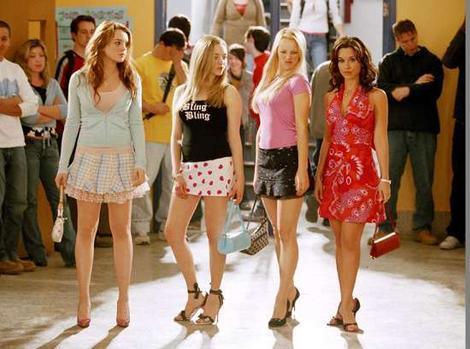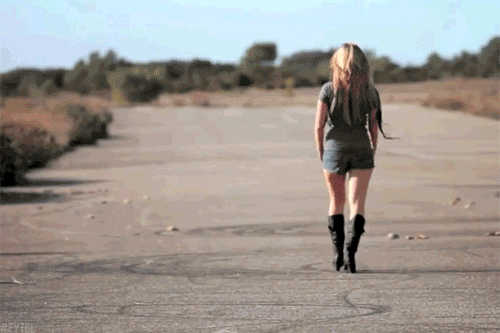I would first like to say
that this class has already made me more perceptive to how certain aspects of
our society is actually structured and excuse my French, but it kind of sucks.
Perspective.
The male gaze is exactly
what we witness everyday. It is not just the magazines, movies, social media
outlets, but it is also the cat-calling in the streets, the constant “mirror
checks” on the subway, and the head-to-toe eyeballing of the women around us. I
originally wanted to write about how men are pretty much responsible for the
male gaze, but I think it is more interesting to also think about how women
contribute to it just as much.
This picture is from the
movie “Mean Girls” written by the famous Tina Fey and I think it is the perfect
(although exaggerated) example of the kind of world that women live in. The
main characters, referred to as “the Plastics,” are the epitome of what all the
girls in high school want to be – pretty, popular, and what all the boys want.
This movie illustrates a concept Berger discusses: “From earliest childhood she
has been taught and persuaded to survey herself continually.” (46) In the
movie, all these high school girls constantly eye each other, judge each other
based on looks, and do what they can to catch the eyes of all these high school
boys. How messed up is it that even before high school, girls are actively
creating this kind of environment where they become the passive subjects of the
male gaze.
As an avid movie watcher,
I now look back on some of my most favorite movies and it is really interesting
to see how many of them are good examples of how the male gaze becomes a
reflection as he can easily identify with the main characters on screen. One of my favorite movies, Anchorman, is a comedy with a humor that can be considered offensive, but I feel
this one scene illustrates an idea that Mulvey brings up about how by being
able to identify with the confident usually male protagonist, the filmmaker is
“giving (the male viewer) a satisfying sense of omnipotence” (838). I think this is one of
the reasons the male gaze can be found everywhere – it is constantly
perpetuated in movies, television, etc.
On the contrary, women can
also identify with other women on screen. In bell hooks’ piece, she interviews
a black woman about her experience at the movie theater and she writes, “to experience
pleasure, Ms. Pauline sitting in the dark must imagine herself transformed,
turned into the white woman portrayed on the screen.” (121). With the
oppositional gaze being a misconception of the role of black women on screen,
hooks places the argument that in this way, black women are there simply to
accentuate the white actresses and is a way to “perpetuate white supremacy”
(119). This also connects to what Mulvey discusses is one of the central
pleasures of cinema – the ability to project one’s look onto the characters in
a movie. The question, however, remains to be: to what extent can women really
get a “satisfying sense of omnipotence” if the female characters are merely
supporting roles and even if they are the main characters, how they “…hold the
look, play to and signify male desire” (837).
In class we discussed the
topic of cat calling in the streets. From personal experience and what seemed
to be true for most of the women in class, it is not a pleasant feeling. I
would feel like an animal almost like a piece of meat put on display somewhere.
I recently came across the following picture on Tumblr and I found it ironic
that the caption read something along the lines of teaching our sons how to
respect a woman’s body. There are too many solutions to resolve these kinds of
issues and even then, I feel like each solution comes with their own flaws. For
example, I am definitely not one to say that women should dress conservatively
to avoid cat calling, but then others will also argue that women dressing
provocatively brings on the cat calling. Either way, I feel that it is going to
take the initiative from both parties to resolve these kinds of issues.
I am definitely much more
aware of how pervasive both the male and oppositional gaze are a part of our
everyday lives and it actually makes me a little more critical of all the media
I come in contact with – from YouTube videos my friends share on Facebook to
new movie trailers.



No comments:
Post a Comment